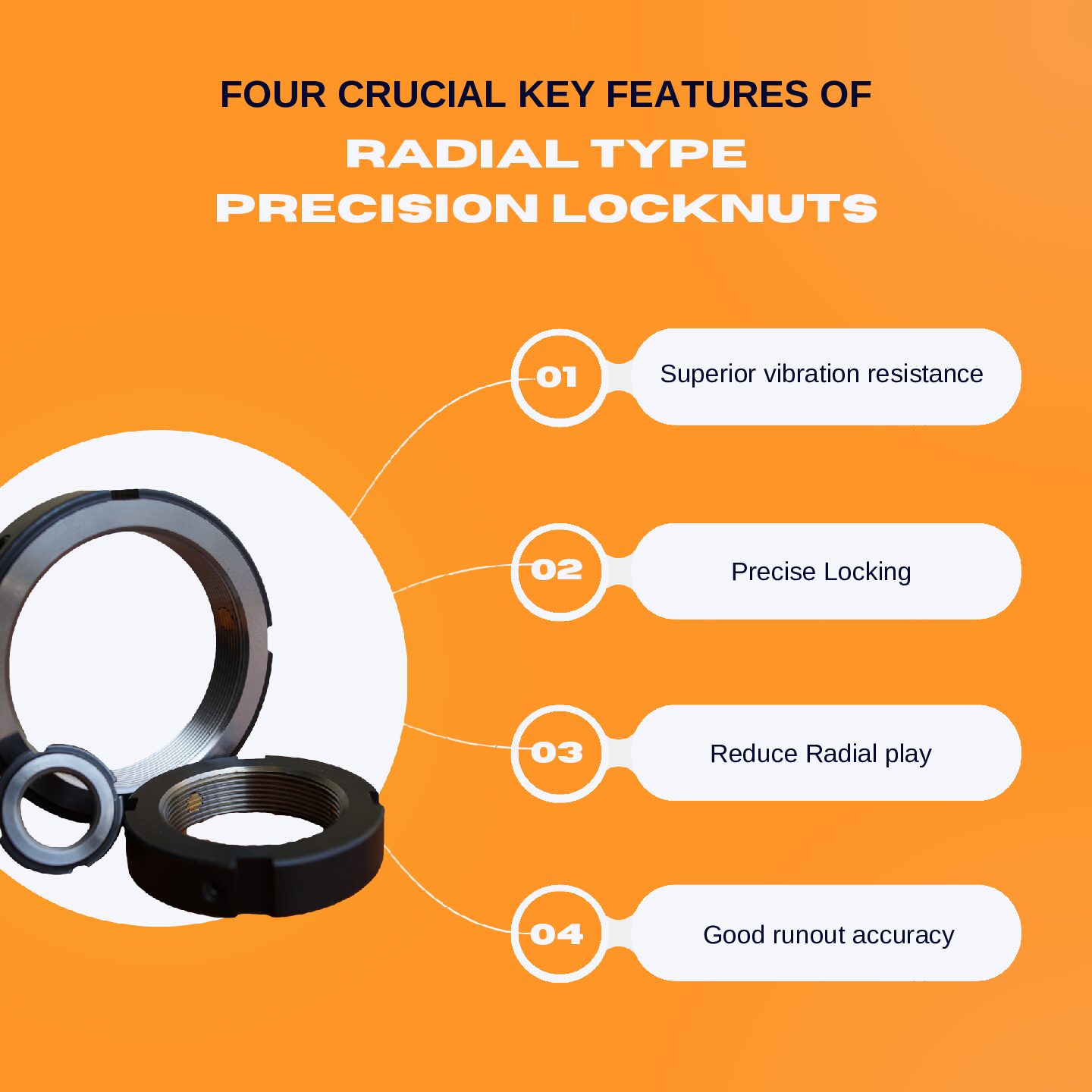In the vast and often underappreciated world of fasteners, the radial type locknut stands out as a silent guardian of secure mechanical assemblies. While its unassuming cylindrical form may lack the visual appeal of its hexagon-headed brethren, its unique design and remarkable functionality make it an indispensable component in countless applications.
Construction:
Unlike traditional nuts, the radial type locknut features a strategically placed split section along its body. This seemingly minor detail unlocks its superpower: the ability to contract radially, meaning it squeezes threads inwards as it’s tightened. This seemingly simple action generates a powerful grip on the mating threads, creating a secure and vibration-resistant connection.
Key Advantages of the Radial Design:
This radial squeeze translates into several distinct advantages:
- Superior Vibration Resistance: The inward bite of the nut effectively counteracts the loosening forces of vibration, ensuring your assembly remains rock-solid even in the most demanding environments, be it a high-speed machine or a rumbling vehicle.
- Precision Locking: The controlled radial contraction delivers consistent locking torque, eliminating the guesswork and potential over-tightening associated with traditional nuts. This ensures optimal preload and prevents thread damage.
- Reduced Radial Play: By hugging the threads, the nut minimizes side-to-side movement, a crucial factor in applications where precise shaft alignment is paramount, such as in robotics or optical instruments.
Applications:
The radial type locknut’s talents extend far beyond a singular role. You’ll find them securing vital components in a wide range of industries:
- Ball Screws: These unsung heroes of linear motion rely on radial locknuts to keep their threads from unraveling under immense forces, ensuring smooth and accurate motion.
- Bearings: From the humble bicycle wheel to the mighty industrial turbine, bearings keep the world spinning, and radial locknuts are the silent guardians against bearing slippage, preventing catastrophic equipment failure.
- Precision Shafts: Whether it’s a delicate surgical instrument or a high-speed robotic arm, precise shaft alignment is vital for accuracy and safety. The radial locknut’s unwavering grip ensures these shafts stay true, one vibration-proof turn at a time.
Limitations to Consider:
While undeniably effective, radial locknuts also have certain limitations:
- Axial Force Sensitivity: Unlike traditional nuts, radial locknuts are not designed to withstand significant axial (pulling) forces. Excessive pulling can cause the nut to disengage, potentially compromising the assembly’s integrity.
- Application Specificity: The radial design may not be suitable for all applications. Assemblies requiring frequent adjustments or disassembly might benefit from a different locking mechanism.
- Material Restrictions: While typically made from steel for durability, radial locknuts are not as readily available in exotic materials like titanium or stainless steel, which might be required for specific environments.
Things to Consider while Purchasing Radial Locknuts:
Despite these limitations, radial locknuts remain a valuable tool in the mechanical engineer’s arsenal. When selecting the right one, remember these key considerations:
- One-sided grind: Choose Locknut that have smooth-grinded surface on one side. A traditional locknut relies solely on its radial squeeze to grip the mating threads. However, this grip can be compromised by slight imperfections or inconsistencies on the mating surfaces. This is where the one-sided grind comes in. By strategically grinding one side of the nut, we essentially create a micro-wedge. This wedge, when tightened, amplifies the radial force, digging deeper into the mating threads and establishing a significantly tighter grip.
- Material: Steel reigns supreme for its durability, but nylon options offer weight savings and corrosion resistance, making them ideal for specific environments.
- Thread Size and Pitch: Just like a regular nut, ensure the locknut’s thread size and pitch match the application perfectly.
- Locking Feature: Some radial locknuts come equipped with an additional grub screw for enhanced bite, while others rely solely on their inherent radial force. Choose the one that best suits your assembly’s needs.
- Consult Professional: Remember, consulting with the right professional can be the difference between a low quality and high quality locknut. If you have any doughts feel free to contact us. We are always happy to guide you.
In Conclusion:
The radial type locknut may not boast fancy aesthetics or a glamorous name, but its silent grip and unwavering dedication to secure assemblies make it a true hero in the world of mechanical engineering. So, the next time you tighten a nut, remember the unsung heroes – the radial type locknuts – who keep our world securely fastened, with the limitations duly considered, one vibration-proof turn at a time.


